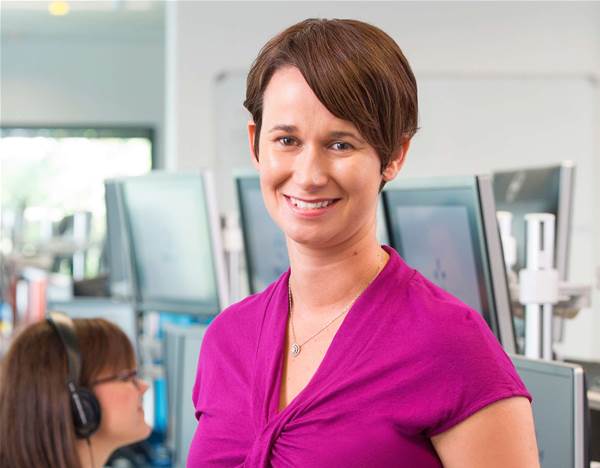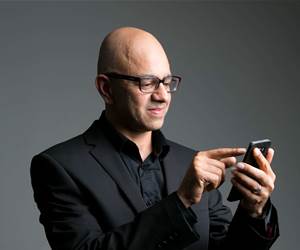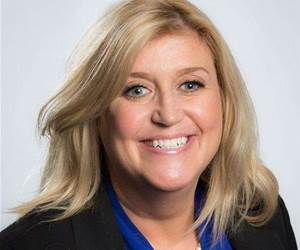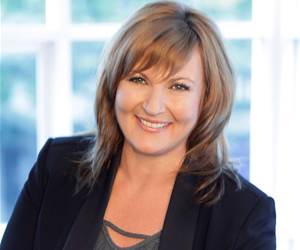Beating the disruptors with bricks and mortar
Mandy Ross - Tatts Group

With ten years worth of data, a team of Wotif alumni and a new CRM, Mandy Ross is setting out to prove that online challengers can be beaten.
Tatts Group was busy merging and acquiring various gaming, lotteries and wagering businesses across Australia when it realised that the game had changed.
A landmark 2008 High Court ruling against “protectionist” state gambling laws opened the wagering market to international competitors able and willing to bet big on Australia’s appetite for online platforms.
Digital disruptors backed by foreign giants Paddy Power and William Hill have since won ten percent of the $3.4 billion Australian horse and sports betting market from duopolists Tatts and Tabcorp.
According to Tatts CIO Mandy Ross, younger punters prefer to bet digitally, and online-only bookmakers benefit from lower costs and more resources to focus on that space.
But Tatts has an ace in the hole: more than ten years of customer data that will help inform a new customer-centric, omni-channel strategy that aims to put “the right products in the right place at the right time”.
“We’ve got all this historical information; we know our customers intimately,” Ross said. “We just haven’t really unleashed that.
“If our customer wants to place a bet with us online because they’re sitting in the comfort of their own home, then we want to be there. If a wagering customer is sitting in a pub or club or hotel with their mates, enjoying a game of football, then we’d also like to be bringing our product to them.
“[That’s] the stuff that we’d be looking to do: offer a more personalised experience so it’s more convenient, more seamless for [customers] to interact with us, rather than any kind of Big Brother-type stuff.”
A group-wide CRM system and team
Tatts will this year spend tens of millions of dollars on its new customer-centric strategy, which encompasses digital marketing, analytics and CRM.
The group comprises three business units: gaming (pokies machines), lotteries, and wagering (horse and sports betting). The latter division was rebranded UBET last month, with a new website and smartphone app, and a bigger marketing budget.
Tatts began implementing a new SAS CRM system and centralised CRM team for lotteries and wagering in 2013, and credited the new approach with more than $1.4 million per month in sales over the last financial year.
“We’ve certainly made a solid investment acquiring a new CRM platform and also hiring a great CRM team,” Ross said.
“We have aspirations there to really lift our capability.
“Our goal is to have world-class CRM in place within the business within the next 12 to 18 months. I’m also looking at our data and insights strategy at the moment. We’re really looking to do more with the information that we have.”
Tatts is planning to invest in Microsoft PDW for data warehousing and Hadoop for analytics, Ross said, but it would need to be mindful of customer privacy and industry regulations.
To that end, Tatts will likely anonymise its trove of customer data, and use it to get a generalised view of individuals’ behaviours and preferences.
That information could then inform a more personalised website layout for logged-in customers.
“When you talk about how can we differentiate ourselves from competitors in the industry, I firmly believe it’s about the insights and data that we already have at our disposal,” Ross said.
“I suspect that we have over a decade worth of data, obviously at different granularities.
“How relevant that is today, I’m not sure, but certainly we’ve got history around lotteries draws and all sorts of interesting stuff. So we’re going to take a look at it and see what is actually meaningful to us today and moving forward.”
Digital disruption and its limits
When Tatts CEO Robbie Cooke took the reins in 2013, he immediately began steering the company towards a digital future, and with good reason – according to IBISWorld research, digital betting underpinned most of the industry’s growth in the past five years as demand for traditional TAB outlets fell.
Cooke and his CIO are no strangers to digital disruption. Both previously worked at Wotif, which was one of the first successful online travel agents in Australia.
Wotif made a splash when it listed on the ASX in 2006. But its $360 million annual revenue accounted for only a fraction of Australia’s $9 billion accommodation market at the time.
Tatts’ online competitors are in a similar position. It’s not their ten percent market share that has Ross worried, but how quickly that number is growing.
“As soon as any competitor has a decent foothold in the market – once they exceed one percent – the rate at which they’re growing is a good indicator of whether or not they’re starting to gain traction and therefore are a threat that should be seriously contemplated,” she said.
But digital disruption has its limits.
In the travel industry last year, Wotif’s profits fell while Flight Centre’s grew. According to share market experts, low barriers to entry for Wotif’s direct competitors had made the online accommodation market increasingly congested.
Flight Centre was better protected from the digital onslaught, as its core business was a personalised advice and booking service it offered via phone, online and in person.
Tatts is betting that its omni-channel approach will prove similarly resilient.
“There’s some interesting research coming out that pure-play [online] retail is not the path forward,” Ross said, pointing to Amazon.com, which opened its first bricks-and-mortar store in February.
“The thinking is that people will want to venture out and interact in interesting ways. The way that they interact in a retail environment is certainly going to evolve, but the thinking is there’s certainly a place for that virtual piece as well as the in-person retail experience.
“We actually see that we are well-positioned to differentiate ourselves in that way and we think that that strategy is well supported by some of the thinking and research that is starting to come out in the retail industry.”
Restructuring for a digital future
Tatts’ technology team has undergone some major changes since Cooke came on board.
The new CEO spoke publicly about growing Tatts’ online business even before officially starting in his new role, and doubled the company’s online resources in the 2014 financial year.
The group last year reported that its online channel had grown to represent 9.4 percent of lotteries and 22.9 percent of wagering sales, up from 8.2 percent and 20.2 percent in 2013.
“[Before Cooke took over], I guess the strategy had been slightly different,” Ross said.
“There had been some investment in online and digital but it had been tackled almost as an add-on business unit. There was an online group running, say, online wagering – they were almost competing with the retail arm of wagering. And the same thing was the case in lotteries.
“So there was certainly investment being made, but I guess the approach that Robbie has adopted and driven, and that I’m obviously picking up through the technology piece, is really about taking a whole-of-business approach to how we go to market in digital and online.”
Soon after Ross was promoted to replace veteran CIO Stephen Lawrie last December, she restructured the division so that her direct reports were more product-focused instead of technology-focused.
Three senior technology executives left the group as a result of the restructure.
Tatts’ technology leadership team now comprises CTO Janet Sutherland, gaming head Robin Mack, wagering head Ivan Ortiz, lotteries head Maree Adams, data and consumer head Dawn Stephenson, enterprise agility head Sharon Robson, and chief architect Derrick Hill.
Sutherland, Mack and Ortiz add to the Wotif alumni.
Ross said she sought staff who were adaptable, collaborative and good problem solvers, adding that she had been happy to find “a great number of people” who wanted to be a part of a more innovative Tatts technology team.
“We’ve certainly been doing some hiring and bringing in some external talent to complement the great industry knowledge that we have internally,” she said.
“I believe it’s the combination of both, mixing all that talent together: [people] who understand our industry, who have the history, and some of the people who’ve got more recent experience perhaps in different industries and working in start-up environments. That’s really the formula for success.
“I certainly believe that no one person has the answer to how we should be responding in this complicated environment. It’s through the combination of many ideas and enhancing those ideas that we can really succeed.”


